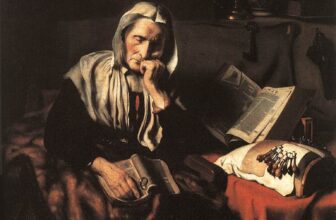
The Castle Under the Louvre: A Journey Through History and Architecture
The Louvre Museum in Paris is one of the most famous and historically significant art museums in the world, attracting millions of visitors every year to its vast collection of art, artifacts, and history. However, beneath this iconic museum lies a lesser-known aspect of the Louvre’s fascinating history: the castle under the Louvre.
The story of the castle under the Louvre is a journey through time, from medieval fortifications to Renaissance expansion, and eventually, its transformation into the world-renowned museum we know today. This post will delve into the history, architecture, and significance of the castle under the Louvre, shedding light on its rich legacy and how it evolved into a cultural symbol of France.
1. Origins of the Louvre Castle: A Fortress of Kings
The origins of the castle beneath the Louvre can be traced back to the 12th century when King Philippe Auguste (Philip II) decided to construct a fortified stronghold on the banks of the River Seine. At the time, Paris was a bustling metropolis, and the need for defense was paramount due to the ongoing wars and threats from foreign invaders.
In 1190, Philippe Auguste initiated the construction of a fortress on the site that would later become the Louvre. The primary purpose of this fortress was to protect Paris from Viking raids and other potential military threats. The location of the fortress was strategic, situated along the Seine River, making it a formidable defense point for the French capital. This early version of the Louvre was a square structure, with thick defensive walls, a moat, and a keep—an imposing central tower that would become a symbol of royal authority.
2. Architectural Features of the Medieval Louvre
The original Louvre Castle was a massive and imposing structure, designed to withstand military assaults. The fortress was built with a combination of limestone and timber, common materials in medieval fortifications. Its design included features typical of the period, such as high walls, watchtowers, and defensive elements like drawbridges and a fortified entrance.
One of the most important features of the medieval Louvre was its keep. The keep, also known as the “donjon,” was the central building of the fortress. It served as both the royal residence and the last line of defense in the event of a siege. The keep was a multi-story tower with thick stone walls and narrow windows designed to provide protection while allowing defenders to fire arrows or drop boiling oil on potential attackers.
In addition to its military function, the Louvre served as a royal residence for the French kings. King Philippe Auguste and his successors lived in the fortress during the medieval period, and it became an important symbol of royal power and control over the city of Paris.
3. The Transformation of the Louvre: From Fortress to Royal Palace
As the centuries passed, the Louvre transitioned from a military stronghold into a symbol of royal authority and luxury. In the 14th century, King Charles V, also known as Charles the Wise, began the process of transforming the medieval fortress into a more comfortable and elegant royal residence. Charles V was a patron of the arts and culture, and he sought to make the Louvre a palace befitting the French monarchy.
Charles V undertook significant renovations to the castle, including the addition of luxurious living spaces, decorative elements, and a grand courtyard. The fortress’s defensive features were softened, and the fortress’s walls were lined with tapestries, fine furniture, and artwork. Charles V also commissioned the construction of a library within the Louvre, which would become one of the most important centers of knowledge in medieval Europe.
The Louvre continued to evolve throughout the 15th and 16th centuries as various French kings expanded and renovated the palace. During the reign of King François I in the early 16th century, the Louvre underwent a significant transformation. François I was a major patron of the Renaissance and sought to make the Louvre a symbol of French Renaissance culture. He commissioned the architect Pierre Lescot to design a new façade for the Louvre, incorporating Renaissance architectural styles, such as classical columns and intricate decorative elements.
Under François I, the Louvre became a more refined and elegant royal residence. The focus shifted from military defense to the cultivation of art, culture, and intellectual pursuits. The Louvre’s collection began to grow during this period, and the palace became a center for the arts, attracting artists, scholars, and intellectuals from across Europe.
4. The Construction of the Grande Galerie: A Major Expansion
In the late 16th century, the Louvre continued to undergo significant expansion. King Henri IV ordered the construction of the Grande Galerie, a long, grand corridor designed to connect the existing palace with the Tuileries Palace, a nearby royal residence. The Grande Galerie, with its grand arches and windows overlooking the Seine, became one of the most impressive features of the Louvre.
This expansion was part of a larger plan to transform the Louvre into a vast cultural and artistic center. The Grande Galerie, with its length of over 400 meters, was intended to house an extensive collection of art and provide space for the display of royal treasures. The construction of the gallery signified the Louvre’s growing role as a museum and cultural institution.
5. The Birth of the Louvre Museum
The true transformation of the Louvre into the museum we know today occurred during the French Revolution in the late 18th century. Following the fall of the monarchy and the rise of the Republic, the Louvre was officially opened as a public museum in 1793, during the height of the Revolution. The French government saw the Louvre as a symbol of the nation’s cultural heritage and the triumph of the people over the monarchy.
The opening of the Louvre Museum marked the beginning of a new chapter in the castle’s history. The royal collections of art, which had been amassed over centuries, were made accessible to the public. Artworks from across Europe, including masterpieces by artists such as Leonardo da Vinci, Michelangelo, and Raphael, were displayed in the Louvre’s galleries.
6. The Modern Louvre: A Global Cultural Icon
Today, the Louvre Museum is one of the most visited cultural institutions in the world, attracting millions of visitors every year. The museum’s collection spans over 9,000 years of human history, from ancient civilizations to modern art. The Louvre houses some of the most famous artworks in the world, including the “Mona Lisa,” the “Venus de Milo,” and the “Winged Victory of Samothrace.”
While the Louvre is now known primarily for its art collection, the legacy of the castle beneath it is still very much present. Visitors to the museum can explore the remnants of the medieval fortress in the Louvre’s lower levels, where archaeological excavations have uncovered sections of the original walls, towers, and foundations of the castle. These excavations provide a fascinating glimpse into the castle’s past and its role in the history of Paris.
7. Discovering the Medieval Louvre Today
One of the most interesting aspects of the Louvre is the opportunity to explore its hidden past. Beneath the museum’s grand galleries and impressive collections lies a subterranean world of medieval history. The remains of the medieval Louvre are accessible to visitors who venture into the museum’s underground sections, where they can see the ancient foundations of the fortress and the remains of the keep.
Archaeological excavations have revealed portions of the original walls, moats, and even medieval staircases that once led to the castle’s upper floors. These remnants serve as a powerful reminder of the Louvre’s origins as a fortress and the changing roles it has played throughout history.
The subterranean areas of the Louvre also offer visitors a chance to learn about the archaeological work that continues to uncover new aspects of the castle’s history. Guided tours and exhibits allow guests to explore the layers of history that lie beneath the museum’s current displays.
8. Conclusion: The Castle Under the Louvre – A Testament to France’s Royal and Cultural Heritage
The castle under the Louvre is a fascinating chapter in the history of Paris and France. From its origins as a medieval fortress to its transformation into a grand royal palace and, eventually, a world-class museum, the Louvre’s history is a testament to the evolution of art, culture, and power in France.
Today, the remnants of the castle serve as a tangible connection to the past, reminding us of the Louvre’s role as both a fortress of kings and a cultural beacon for the world. As visitors explore the Louvre Museum and its galleries, they are not only immersing themselves in the beauty of art but also walking through centuries of history, from the medieval foundations to the Renaissance masterpieces that continue to shape our understanding of the world.
The castle under the Louvre may no longer serve its original military purpose, but its legacy lives on as a symbol of France’s rich cultural heritage. It stands as a reminder that the Louvre is not just a museum but a living, breathing monument to the history and artistic achievements of France.




